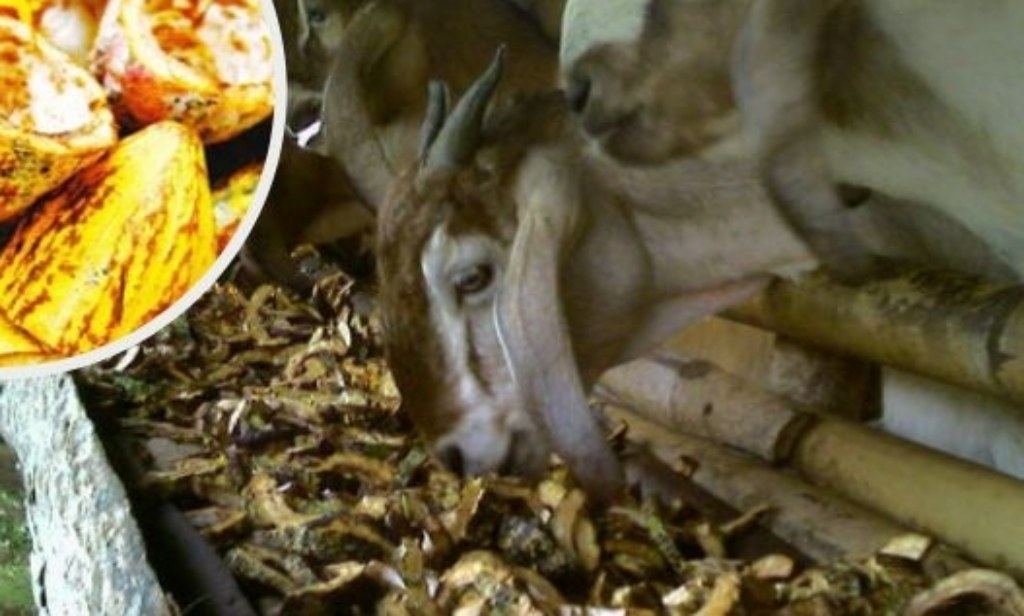
The utilization of agricultural waste for animal feed has emerged as a promising alternative to address the growing demand for livestock nutrition. Among these waste products, Cocoa Bean Pod holds significant potential as a feed source, especially for ruminant livestock.
Benefits of Cocoa Bean Pod for Animal Feed not only addresses the issue of agricultural waste management but also provides a sustainable, economical, and nutritionally viable feed alternative for livestock. Whether through wilting or fermentation, this method offers a win-win solution for farmers looking to reduce costs while maintaining livestock health and productivity.
Benefits of Cocoa Bean Pod for Animal Feed
This approach aligns with the broader effort to optimize agricultural resources, reducing waste while enhancing animal nutrition.
1. Sustainability and Garden Sanitation
The use of cocoa fruit skin for animal feed contributes to better garden sanitation. Piles of discarded cocoa skins are not only unsightly but can also become breeding grounds for pests and diseases, such as fruit borers and fruit rot. By utilizing this waste for feed, farms can maintain a cleaner environment, reducing the likelihood of pest outbreaks. However, it is important to ensure that the skins used are free from pests and diseases to avoid any negative impact on the livestock.
2. Nutritional Content
Cocoa fruit skin is rich in fiber but has relatively low protein content, which is typical of many agricultural by-products. Despite its lower protein levels, it provides substantial fiber that is crucial for the digestive health of ruminants like cattle and goats. By combining cocoa skins with protein-rich legumes like gamal, lamtoro, and turi, the nutritional balance of livestock feed can be optimized, enhancing the overall health and productivity of the animals.
3. Methods of Preparation
Research conducted by the Agricultural Research and Development Agency has identified two primary methods for processing cocoa skins into animal feed: the wilting method and the fermentation method. Each method has its own advantages and limitations in terms of preparation time, shelf life, and nutrient preservation.
a) Wilting Method
The wilting method is relatively simple and quick. First, the cocoa skin is chopped into smaller pieces, which accelerates the wilting process. The pieces are then air-dried for about 5-6 hours. After wilting, the feed can be provided directly to livestock for up to 3-4 days. This method is ideal for farmers seeking a quick and cost-effective solution, but the feed has a shorter shelf life compared to the fermentation method.
b) Fermentation Method
Fermentation, while requiring more effort and time, produces a feed that lasts much longer, up to six months with proper storage. The process involves wilting the cocoa skins, chopping them, and mixing with urea and probion to facilitate fermentation. The skins are layered on tarpaulins, treated with the mixture, and left to ferment for 21 days, with regular turning to regulate temperature.
This method yields a highly nutritious feed that can be stored for long periods, making it a reliable option during times of feed scarcity. Additionally, fermented feed is more digestible for livestock, improving nutrient absorption.
4. Economical and Environmental Benefits
The use of cocoa skin for feed reduces dependence on conventional feed sources, which can be expensive. It allows farmers to use readily available agricultural waste, lowering feeding costs while reducing waste disposal challenges. Moreover, the practice contributes to the circular economy, making the farming system more sustainable.
5. Optimal Usage
Cocoa skin should only constitute about 40% of the total feed provided to livestock. It is recommended that the daily feed portion should be around 10% of the animal’s body weight. Mixing the feed with legumes ensures that the animals receive a balanced diet, as legumes are rich in protein and can complement the fiber content of the cocoa skins.
Cocoa Bean Pod Content: A Rich Source of Cellulose and Carbon
Cocoa bean pods, often regarded as agricultural waste after harvesting the cocoa beans, hold significant potential for various applications beyond disposal. According to expert research, cocoa pods contain a substantial amount of cellulose, lignin, and hemicellulose, all of which make them valuable for processing into products like charcoal that are rich in carbon.
1. High Cellulose Content
Cocoa pods contain about 23-54% cellulose, a plant-based polymer that is a crucial component of plant cell walls. This high cellulose content highlights the potential of cocoa pods as a raw material for various industries. Cellulose can be used in the production of paper, biofuels, and biodegradable materials, making cocoa pods an environmentally friendly resource.
2. Lignin Composition
Lignin, a complex organic polymer, constitutes around 60.67% of the cocoa pod’s structure. Lignin plays a key role in providing rigidity to plant cell walls and is highly resistant to decomposition. Its high percentage in cocoa pods suggests that these pods can be an excellent source of materials for producing biochar, a form of charcoal used in agriculture for soil enrichment and carbon sequestration.
3. Cellulose (Holocellulose) and Hemicellulose
Cocoa pods also contain 36.47% cellulose (holocellulose) and 18.90% hemicellulose. Holocellulose refers to the entire carbohydrate fraction of the plant material, which includes both cellulose and hemicellulose. These components are crucial for the production of bio-based materials and can be converted into valuable products like bioethanol, bioplastics, and other sustainable materials.
4. Potential for Charcoal Production
The combination of high cellulose and lignin content in cocoa pods indicates that they are rich in carbon, making them ideal for charcoal production. Charcoal derived from cocoa pods can be used as a sustainable energy source, replacing traditional wood charcoal and reducing deforestation. Additionally, this form of charcoal can be used in industrial processes, as activated carbon, or even for soil improvement in the form of biochar.
Comments are closed